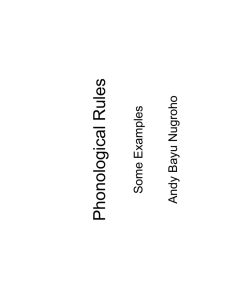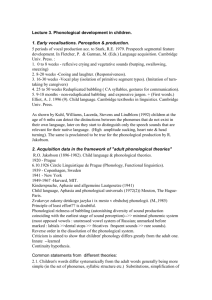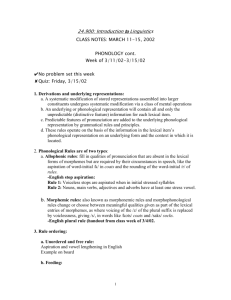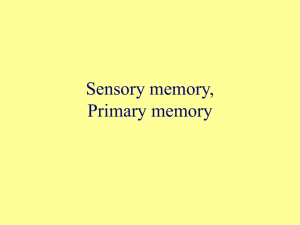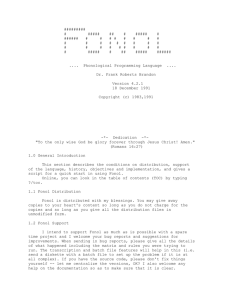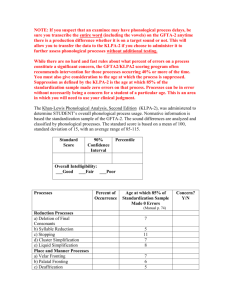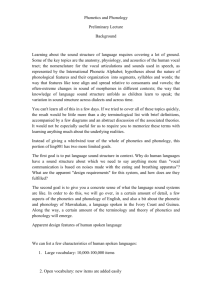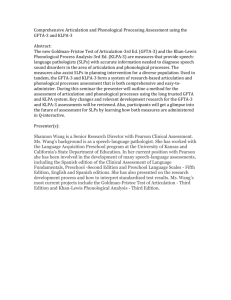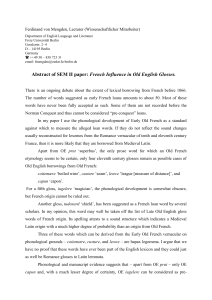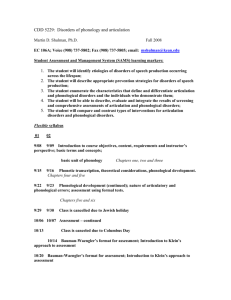Derivations
advertisement
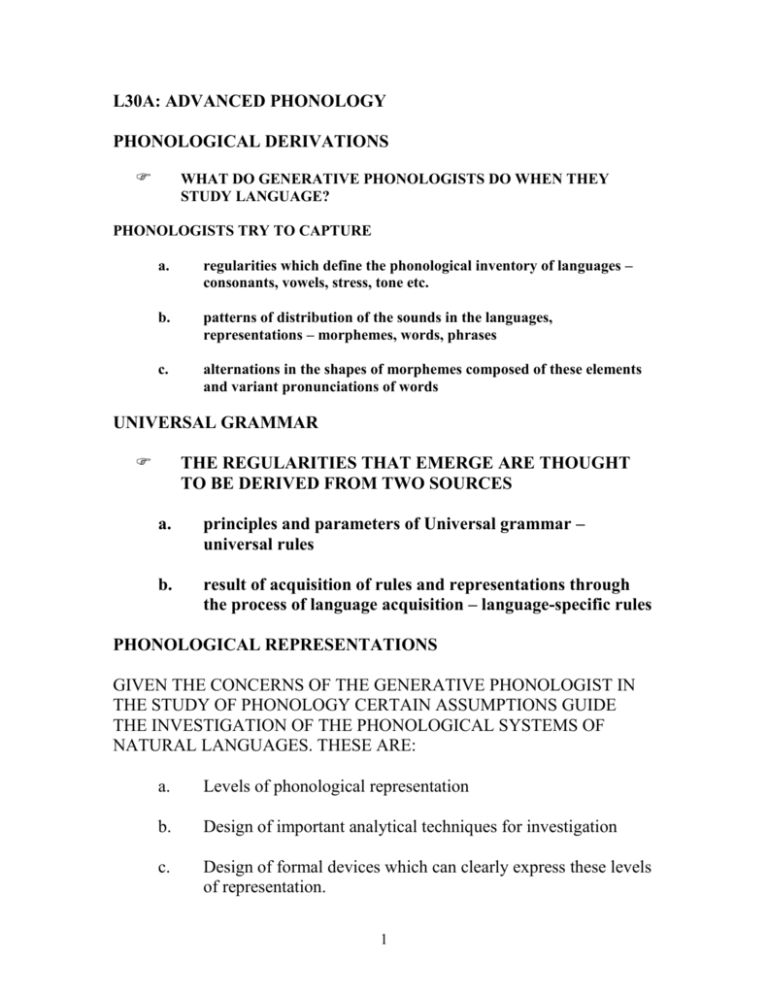
L30A: ADVANCED PHONOLOGY PHONOLOGICAL DERIVATIONS WHAT DO GENERATIVE PHONOLOGISTS DO WHEN THEY STUDY LANGUAGE? PHONOLOGISTS TRY TO CAPTURE a. regularities which define the phonological inventory of languages – consonants, vowels, stress, tone etc. b. patterns of distribution of the sounds in the languages, representations – morphemes, words, phrases c. alternations in the shapes of morphemes composed of these elements and variant pronunciations of words UNIVERSAL GRAMMAR THE REGULARITIES THAT EMERGE ARE THOUGHT TO BE DERIVED FROM TWO SOURCES a. principles and parameters of Universal grammar – universal rules b. result of acquisition of rules and representations through the process of language acquisition – language-specific rules PHONOLOGICAL REPRESENTATIONS GIVEN THE CONCERNS OF THE GENERATIVE PHONOLOGIST IN THE STUDY OF PHONOLOGY CERTAIN ASSUMPTIONS GUIDE THE INVESTIGATION OF THE PHONOLOGICAL SYSTEMS OF NATURAL LANGUAGES. THESE ARE: a. Levels of phonological representation b. Design of important analytical techniques for investigation c. Design of formal devices which can clearly express these levels of representation. 1 DERIVATIONS The phonologists quest for structural patterns in the phonological systems of languages lead to the following basis hypotheses: a. b. c. d. phonemic/underlying representation phonetic/surface representation (a) and (b) are related through a process of derivation derivations implies phonological rule ordering HOW DO THE ABOVE APPLY TO LABIALISATION IN JAMAICAN CREOLE 2
